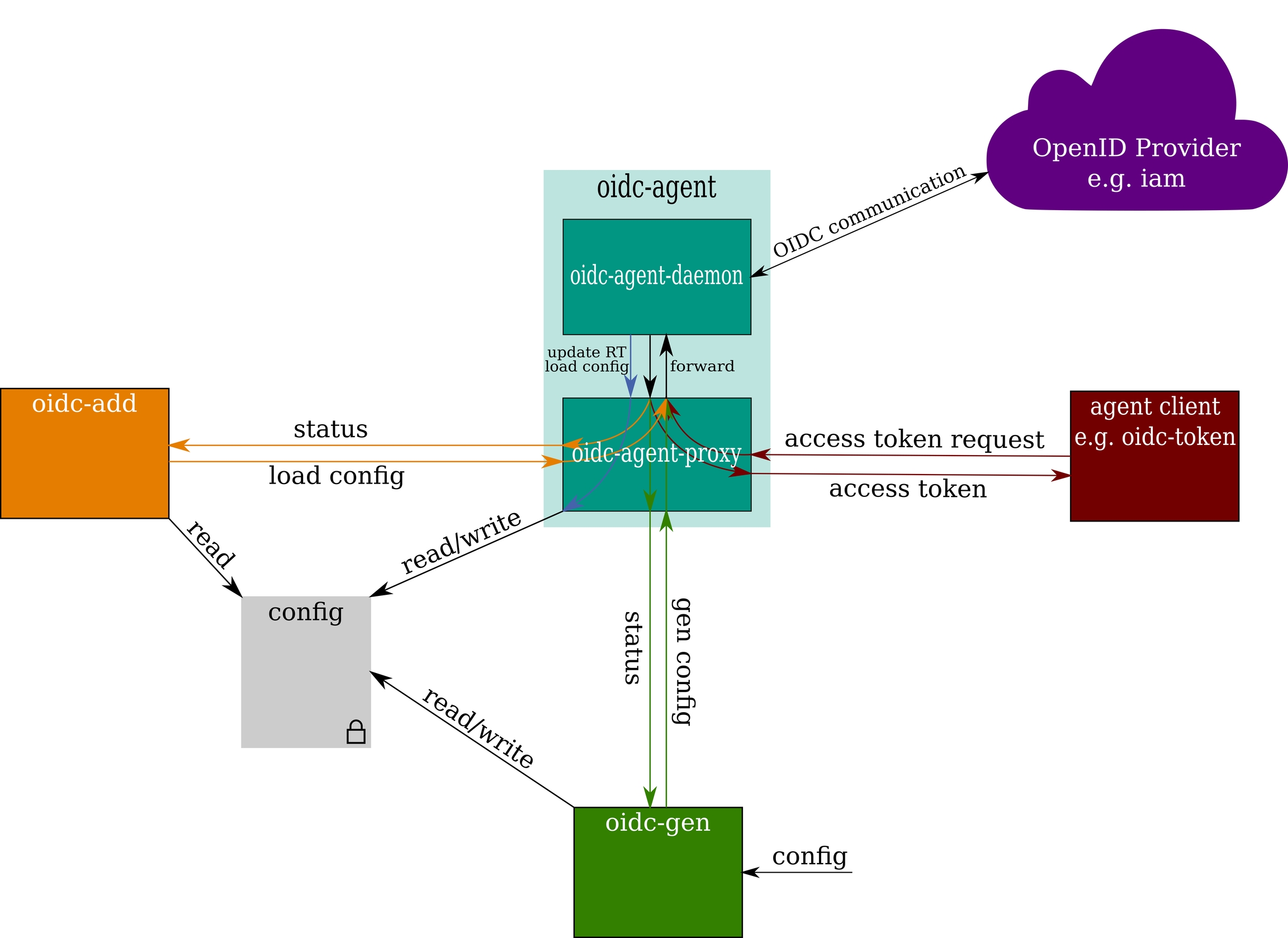Privilege Separation & Architecture
We followed the security by design principle and split the system’s functionalities into multiple components. In that way we also achieved privilege separation.
The oidc-agent project consists of the following components:
oidc-agent: The actual agent managing the tokens and performing all communication with the OpenID Provider; internally also has two components:oidc-agent-proxy: A proxy daemon that forwards requests to oidc-agent-daemon. It handles encryption passwords and file access for oidc-agent-daemon when it has to read (autoload) or write (changing refresh token) an account configuration file.
oidc-agent-daemon: The daemon that holds the loaded accounts and performing all communication with the OpenID Provider
oidc-gen: A tool for generating account configuration files for usage withoidc-agentandoidc-add.oidc-add: A tool that loads the account configurations into the agent.oidc-tokenand third party applications: Applications that need an OIDC access token can obtain it through the agent’s API. One example application for obtain access tokens isoidc-token.

Last updated